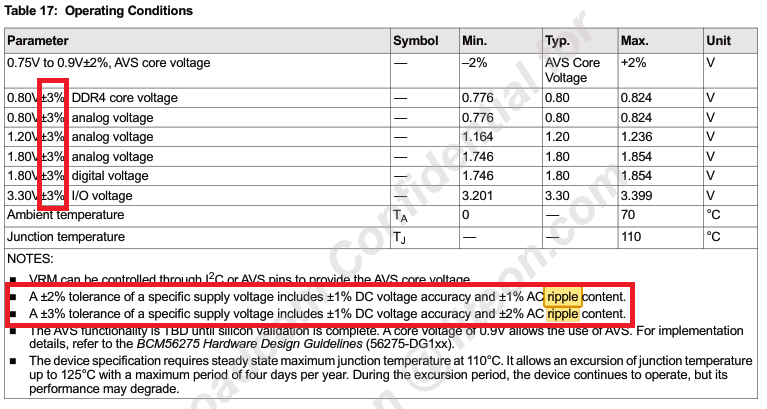Tool/software: WEBENCH® Design Tools
Hi,
I am using WEBENCH tool to design power solution and please explain the Vout Tolerance of WEBENCH for me so that I could know if it meets my demand for ripple & noise, I would like to know if the Vout Tolerance is contain DC voltage accuracy and AC ripple content.
I've tried using TPS54326 by this tool and get a value 2.61% for the Vout Tolerance, and my chipset's spec is 1% for DC voltage accuracy and 2% for AC ripple content, is it okay for the chipset?


